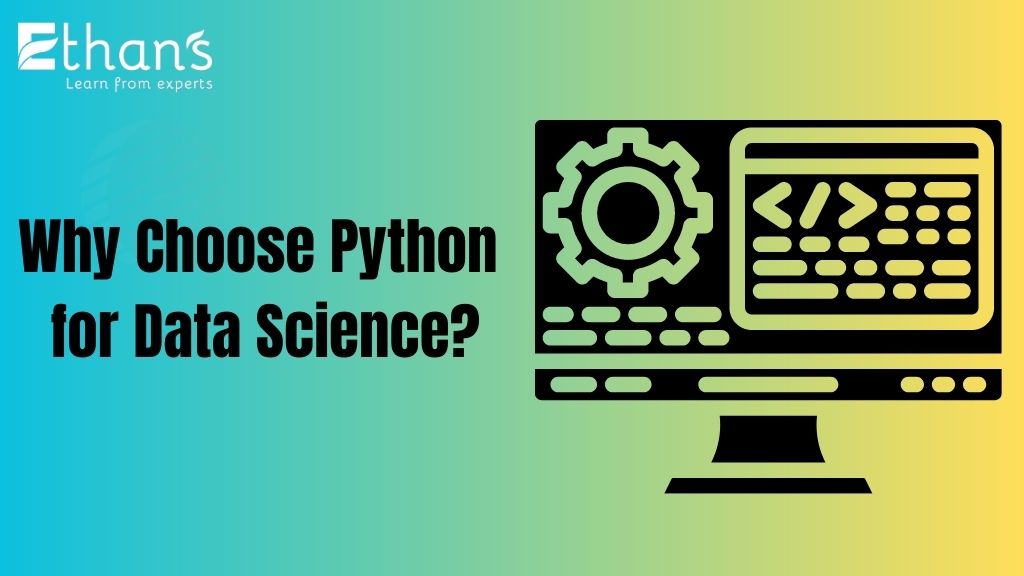Python has emerged as one of the most popular programming languages in the field of data science. With its simplicity, versatility, and powerful libraries, Python has become a preferred choice for data scientists and analysts. In this article, we will explore the reasons why Python programming is an excellent choice for data science and how it can empower professionals in this field.
Python is a high-level, general-purpose programming language known for its simplicity and readability. It was created by Guido van Rossum and first released in 1991. Python’s design philosophy emphasizes code readability, making it easier for programmers to express their ideas and write clean, maintainable code.
Python’s Simplicity and Readability
One of the key advantages of Python is its simplicity and readability. The language uses a clean and straightforward syntax, which reduces the learning curve for beginners and allows experienced programmers to write efficient code quickly. Python’s readability is evident in its use of indentation and its English-like structure, making it easy to understand and maintain.
Extensive Libraries and Tools for Data Science
Python provides a vast ecosystem of libraries and tools specifically tailored for data science. The most notable library is NumPy, which offers support for large, multi-dimensional arrays and matrices, along with a collection of mathematical functions to operate on these structures. Another widely used library is pandas, which provides high-performance, easy-to-use data structures and data analysis tools.
Integration with Other Technologies
Python seamlessly integrates with other technologies commonly used in data science. For example, it can interact with databases through libraries like SQLAlchemy and psycopg2, enabling data retrieval and manipulation directly from database systems. Python also supports integration with big data frameworks like Apache Spark and Hadoop, allowing data scientists to process large-scale datasets efficiently.
Strong Community Support
Python enjoys a vibrant and active community of developers and data scientists. The community contributes to the development of new libraries, tools, and frameworks that enhance the capabilities of Python for data science. This support ensures that Python remains up to date with the latest trends and advancements in the field.
Scalability and Performance
Python’s scalability and performance have improved significantly over the years. The introduction of libraries like Dask and Cython enables efficient parallel computing and boosts performance in data-intensive tasks. Additionally, Python’s integration with NumPy and pandas allows for seamless execution of operations on large datasets, making it an ideal choice for scalable data science projects.
Versatility in Data Manipulation and Analysis
Python offers a wide range of tools and techniques for data manipulation and analysis. The pandas library provides functions for data cleaning, transformation, merging, and aggregation. Moreover, Python supports various file formats, including CSV, JSON, Excel, and SQL databases, facilitating data integration from multiple sources.
Machine Learning Capabilities
Python has become the de facto language for machine learning. Libraries like scikit-learn, TensorFlow, and PyTorch provide robust machine learning algorithms and frameworks, empowering data scientists to build and deploy advanced predictive models. Python’s simplicity and expressiveness make it easier to experiment with different models and iterate quickly.
Visualization and Data Presentation
Data visualization is crucial for conveying insights effectively. Python offers libraries like Matplotlib, Seaborn, and Plotly that enable the creation of visually appealing charts, graphs, and interactive plots. These tools make it easier for data scientists to communicate their findings and present data in a visually engaging manner.
Deployment and Productionisation of Models
Python’s versatility extends beyond data analysis and modeling. It provides frameworks like Flask and Django that simplify the deployment of machine learning models as web applications. Python’s integration with cloud platforms such as Amazon Web Services and Microsoft Azure further facilitates the deployment and scaling of data science projects.
Python’s Popularity and Job Market
Python’s popularity has soared in recent years, making it one of the most sought-after skills in the job market. Many organizations across various industries are adopting Python for data science, creating a strong demand for professionals proficient in the language. Mastering Python opens up a plethora of career opportunities for aspiring data scientists.
Python vs. Other Programming Languages in Data Science
While Python is widely preferred in data science, it’s essential to consider other programming languages like R and Julia. R excels in statistical analysis and has extensive libraries for data visualization. Julia, on the other hand, emphasizes high-performance computing. Each language has its strengths and is suitable for specific use cases, but Python’s versatility and large community support give it an edge in many scenarios.
Challenges and Limitations
Despite its numerous advantages, Python does have some limitations in the context of data science. Python’s Global Interpreter Lock (GIL) can hinder multithreading performance, which may impact computationally intensive tasks. However, this limitation can be mitigated through the use of external libraries like NumPy or Cython that bypass the GIL.
Future of Python in Data Science
Python’s future in data science appears bright. Its continued growth in popularity, coupled with ongoing development and advancements in libraries and frameworks, solidifies Python’s position as a dominant programming language in the field. As data science evolves, Python will likely remain at the forefront, empowering data scientists to extract valuable insights from complex datasets.
Conclusion
Python programming is an excellent choice for data science due to its simplicity, extensive libraries, integration capabilities, community support, scalability, and versatility in data manipulation, analysis, and machine learning. Its popularity and job market demand further make Python a valuable skill for aspiring data scientists. Embracing Python opens up a world of opportunities in the exciting field of data science.




